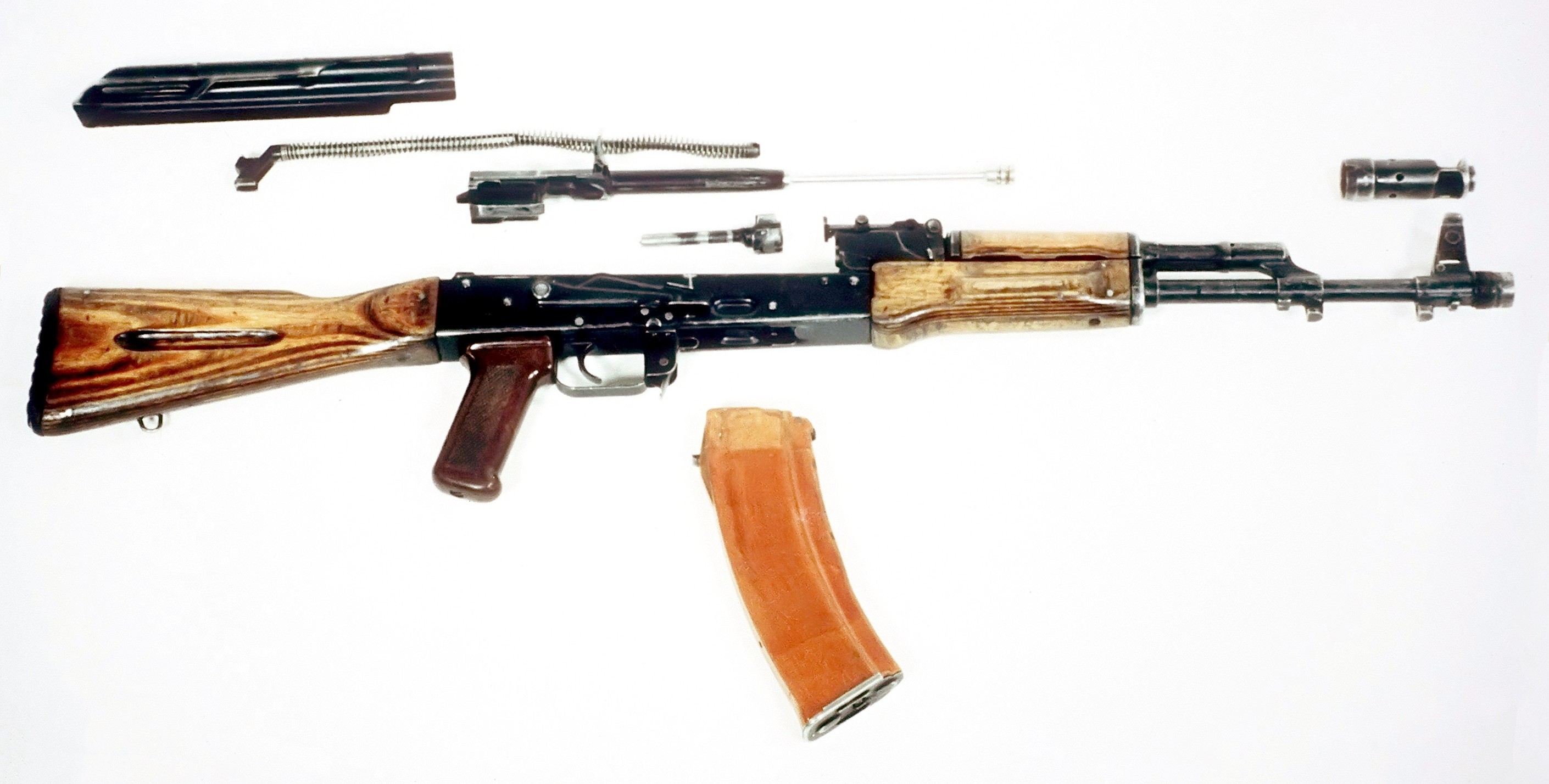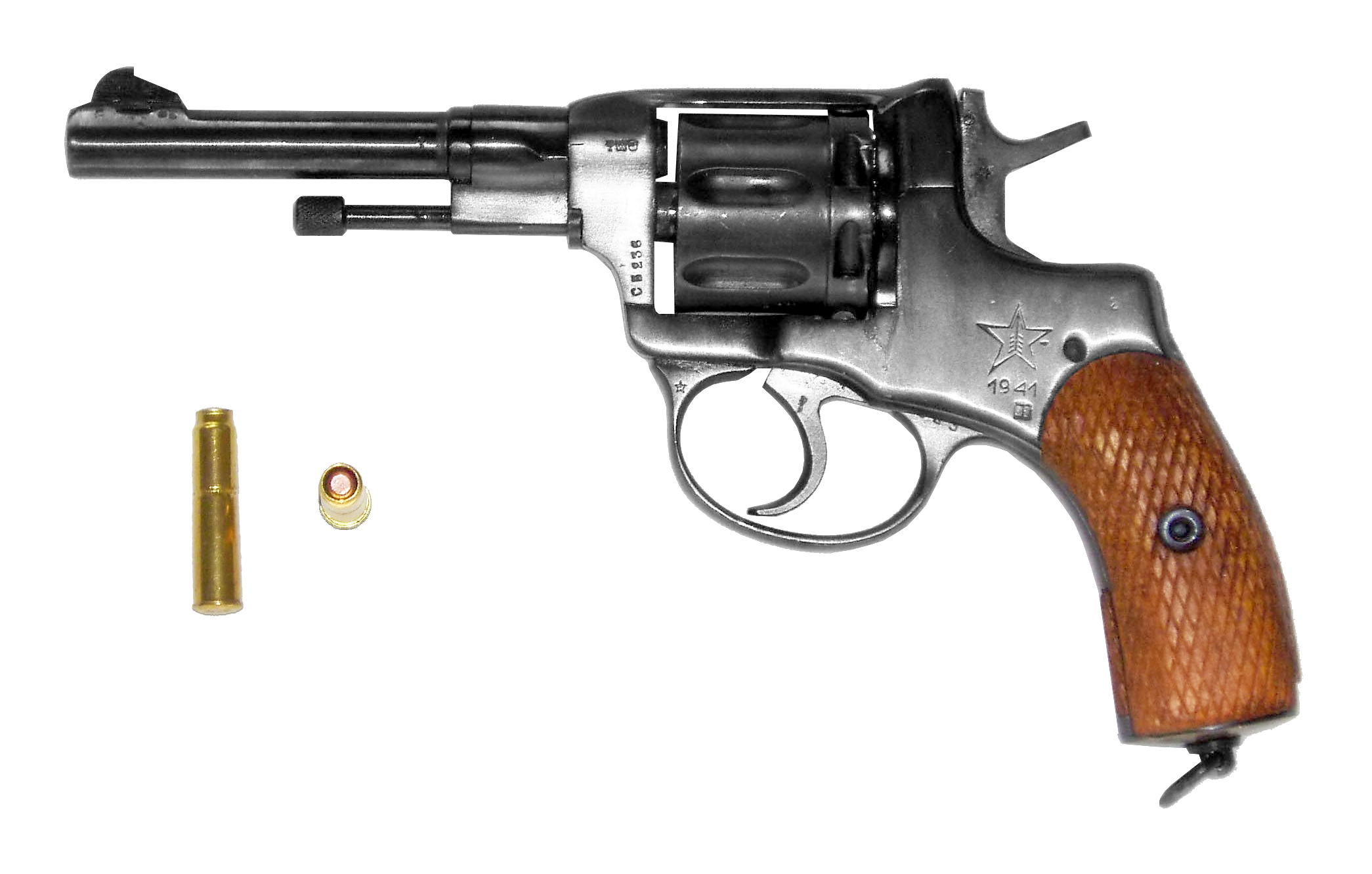|
80.002
The 80.002 was a combined assault rifle and grenade launcher prototype based on the AK-74. The weapon was developed at TsNIITochMash TsNIITochMash (russian: ЦНИИТОЧМАШ) is a Russian industrial design bureau which is a major designer and producer of weapons for the Russian military and MVD National Guard. The name is an initialism for Central Scientific - Research Inst ... by Yu.V. Minaev, V.I. Chelikin, and G.A. Yanov between 1975 and 1979. The main difference from the Kalashnikov is the presence of two adjacent barrels of 5.45 mm and 12.7 mm respectively. The thickness of the receiver was double that of an AK-74. The 80.002 was not accepted for service. See also * Attached grenade launchers * Objective Individual Combat Weapon program * Daewoo K11 * List of Russian weaponry * TKB-059 References External links image 12.7 mm firearms 5.45×39mm assault rifles Trial and research firearms of the Soviet Union Grenade launchers Kalashnikov deriv ... [...More Info...] [...Related Items...] OR: [Wikipedia] [Google] [Baidu] |
TKB-059
TKB-059 (ТКБ-059) was a Soviet three-barrel bullpup assault rifle, capable of fully automatic fire, chambered for the 7.62×39mm round and manufactured by Tula Arms Plant in 1966. It was based on the Pribor 3B (Прибор 3Б), an earlier experimental assault rifle with three barrels. Both weapons were developed by the small arms designer G. A. Korobov. Both weapons used a tripled 7.62×39mm magazine with a capacity of 45 rounds, with each barrel independently fed from the magazine. The TKB-059 can be fired ambidextrously as the cartridge ejection is downwards behind the magazine area. TKB-059 can now be seen at the Tula arms museum. item 83 in that list See also * |
Objective Individual Combat Weapon Program
The Objective Individual Combat Weapon or OICW was the next-generation service rifle competition that was under development as part of the United States Army OICW program; the program was eventually discontinued without bringing the weapon out of the prototype phase. The acronym OICW is often used to refer to the entire weapons program. It was started in the aftermath of the Advanced Combat Rifle (or ACR) during the 1980s. Like the ACR program, it has largely been a failure in terms of achieving the specific program goals (e.g., replacing the M16) and has cost millions of dollars, but has resulted in many innovative weapons and weapon concepts as well as offshoot programs of its own. Development The central idea of the program was to develop a rifle that enabled the attacking of targets behind cover by using airburst munitions. The munitions were to be much smaller than pre-existing grenades and grenade launchers, but large enough to be effective. The idea was refined into a c ... [...More Info...] [...Related Items...] OR: [Wikipedia] [Google] [Baidu] |
Grenade Launcher
A grenade launcher is a weapon that fires a specially-designed large-caliber projectile, often with an explosive, smoke or gas warhead. Today, the term generally refers to a class of dedicated firearms firing unitary grenade cartridges. The most common type are man-portable, shoulder-fired weapons issued to individuals, although larger crew-served launchers are issued at higher levels of organisation by military forces. Grenade launchers can either come in the form of standalone weapons (either single-shot or repeating) or attachments mounted to a parent firearm, usually a rifle. Larger crew-served automatic grenade launchers such as the Mk 19 are mounted on tripods or vehicles. Some armored fighting vehicles also mount fixed arrays of short range, single-shot grenade launchers as a means of defense. History Early precursors The earliest devices which could be referred to as grenade launchers were slings, which could be used to throw early ''grenado'' fuse bombs. The a ... [...More Info...] [...Related Items...] OR: [Wikipedia] [Google] [Baidu] |
AK-74
The AK-74 (Russian: , tr. ''Avtomat Kalashnikova obraztsa 1974 goda'', lit. 'Kalashnikov assault rifle model 1974) is an assault rifle designed by small arms designer Mikhail Kalashnikov in 1974. While primarily associated with the Soviet Union, it has been used by multiple states throughout the 20th century and onwards. It is chambered for the 5.45×39mm cartridge, which replaced the 7.62×39mm cartridge of Kalashnikov's earlier automatic weapons for the Soviet armed forces. The rifle first saw service with Soviet forces in the Afghanistan conflict from 1979 onwards. The head of the Afghan bureau of the Inter-Services Intelligence (ISI), the intelligence agency of Pakistan, claimed that America's Central Intelligence Agency (CIA) paid $5,000 for the first AK-74 captured by the Afghan mujahideen during the Afghan-Soviet War. , most countries of the former Soviet Union use the rifle. Licensed copies were produced in Bulgaria (AK-74, AKS-74 and AKS-74U), and in the former ... [...More Info...] [...Related Items...] OR: [Wikipedia] [Google] [Baidu] |
TsNIITochMash
TsNIITochMash (russian: ЦНИИТОЧМАШ) is a Russian industrial design bureau which is a major designer and producer of weapons for the Russian military and MVD National Guard. The name is an initialism for Central Scientific - Research Institute for Precision Machine Engineering (Центральный научно-исследовательский институт точного машиностроения). TsNIITochMash determines the development of and develops small arms and simulators for them, individual field equipment, conducts R&D on control systems for precision-guided munitions (as well as protection against them), field artillery systems and new materials. It also develops most cartridges, from small arms up to 14.5×114mm, for the Russian Armed Forces. Military products * 9×21mm Gyurza SR-1M Gyurza pistol, cartridges: SP-10, SP-11 * 9×21mm Gyurza SR-2 Udav pistol, cartridges: SP-10, SP-11 * 9×21mm Gyurza SR-2 Veresk submachine gun, cartridges: SP-10, ... [...More Info...] [...Related Items...] OR: [Wikipedia] [Google] [Baidu] |
Receiver (firearms)
In firearms terminology, the firearm frame or receiver is the part of a firearm which integrates other components by providing housing for internal action components such as the hammer, bolt or breechblock, firing pin and extractor, and has threaded interfaces for externally attaching ("receiving") components such as the barrel, stock, trigger mechanism and iron/optical sights. The receiver is often made of forged, machined, or stamped steel or aluminium; in addition to these traditional materials, modern science and engineering have introduced polymers and sintered metal powders to receiver construction. Mounting A barrel can be fixed to the receiver using barrel and receiver action threads or similar methods. In US law For the purposes of United States law, the receiver or frame is legally the firearm, and as such it is the controlled part. The definition of which assembly is the legal receiver varies from firearm to firearm, under US law. Generally, the law requ ... [...More Info...] [...Related Items...] OR: [Wikipedia] [Google] [Baidu] |
Military Historical Museum Of Artillery, Engineers And Signal Corps
The Military Historical Museum of Artillery, Engineers and Signal Corps (russian: Военно-исторический музей артиллерии, инженерных войск и войск связи), also known simply as the Artillery Museum, is a state-owned military museum in Saint Petersburg, Russia. Its collections – consisting of Russian military equipment, uniforms and decorations – are hosted in the Kronverk (a crownwork of the Peter and Paul Fortress) situated on the right bank of the Neva near Alexander Park. The museum is managed by the Russian Ministry of Defence. Location The museum is located on the southern shore of Petrogradsky Island, directly across the Kronverkskiy Strait from the Peter and Paul Fortress. Exhibits Among the exhibits are: * Cannons made by Andrei Chokhov – the maker of the famous Czar Cannon * An official chariot used for transportation of the artillery banner in the middle of the 18th century * The cannons from "the ... [...More Info...] [...Related Items...] OR: [Wikipedia] [Google] [Baidu] |
Grenade Launcher
A grenade launcher is a weapon that fires a specially-designed large-caliber projectile, often with an explosive, smoke or gas warhead. Today, the term generally refers to a class of dedicated firearms firing unitary grenade cartridges. The most common type are man-portable, shoulder-fired weapons issued to individuals, although larger crew-served launchers are issued at higher levels of organisation by military forces. Grenade launchers can either come in the form of standalone weapons (either single-shot or repeating) or attachments mounted to a parent firearm, usually a rifle. Larger crew-served automatic grenade launchers such as the Mk 19 are mounted on tripods or vehicles. Some armored fighting vehicles also mount fixed arrays of short range, single-shot grenade launchers as a means of defense. History Early precursors The earliest devices which could be referred to as grenade launchers were slings, which could be used to throw early ''grenado'' fuse bombs. The a ... [...More Info...] [...Related Items...] OR: [Wikipedia] [Google] [Baidu] |
Daewoo K11
The S&T Daewoo K11 DAW (Dual-barrel Air-burst Weapon) is a multi-weapon resembling the earlier US Objective Individual Combat Weapon in concept, design and operation. It consists of two separate weapons combined into a single unit: a lower assault rifle chambered to fire 5.56×45mm NATO rounds and an upper 20×30mm (caliber of shell x length of propellent case) grenade launcher firing both conventional and air-bursting "smart" grenades, along with its integrated digital sighting unit. History The K11 was officially unveiled to the public at the DSEI military expo, though information pertaining to its development has been available since 2006. The weapon was adopted by the Republic of Korea Armed Forces in 2008 and was distributed within the Republic of Korea Army during 2010, making it the world's first army to use an airburst rifle as standard issue in the military. Each squad is reported to be issued two K11s, though it will not replace grenadiers who currently use K2 rifles ... [...More Info...] [...Related Items...] OR: [Wikipedia] [Google] [Baidu] |
List Of Russian Weaponry
The following is a list of modern Russian small arms and light weapons which were in service in 2016: Handguns Revolvers Pistols Special purpose Submachine guns Special purpose Shotguns Rifles Bolt-action Semi-automatic Selective-fire Special purpose Anti-materiel rifles Machine guns Squad automatic weapons (SAWs) General-purpose Heavy Hand grenades Fragmentation Anti-tank Grenade launchers Stand-alone Attached Automatic grenade launchers Rocket launchers General purpose Incendiary and thermobaric Special purpose Recoilless rifles Mortars Anti-tank guided missiles Man-portable air defense system Landmines See also * List of equipment of the Russian Ground Forces * List of Russian weaponry makers References {{DEFAULTSORT:Russian small arms and light weapons Weapons of Russia Lists of weapons Firearms of Russia, Russian and Soviet milita ... [...More Info...] [...Related Items...] OR: [Wikipedia] [Google] [Baidu] |
Trial And Research Firearms Of The Soviet Union
In law, a trial is a coming together of parties to a dispute, to present information (in the form of evidence) in a tribunal, a formal setting with the authority to adjudicate claims or disputes. One form of tribunal is a court. The tribunal, which may occur before a judge, jury, or other designated trier of fact, aims to achieve a resolution to their dispute. Types by finder of fact Where the trial is held before a group of members of the community, it is called a jury trial. Where the trial is held solely before a judge, it is called a bench trial. Hearings before administrative bodies may have many of the features of a trial before a court, but are typically not referred to as trials. An appeal (appellate proceeding) is also generally not deemed a trial, because such proceedings are usually restricted to a review of the evidence presented before the trial court, and do not permit the introduction of new evidence. Types by dispute Trials can also be divided by the type of d ... [...More Info...] [...Related Items...] OR: [Wikipedia] [Google] [Baidu] |

.jpg)



